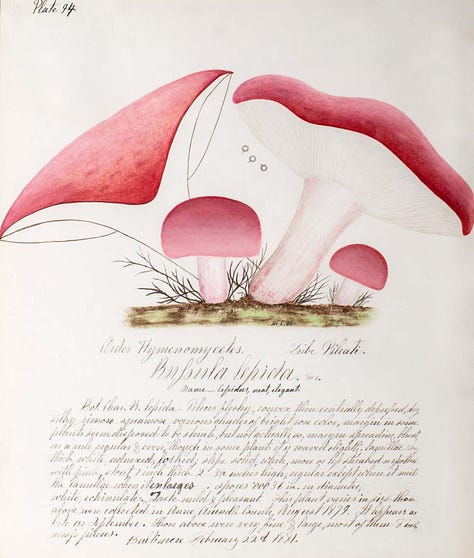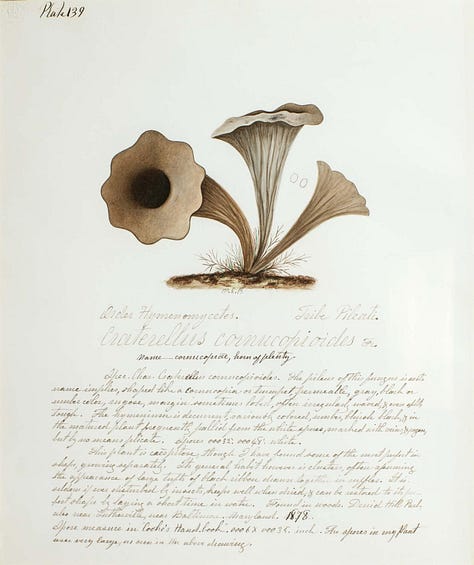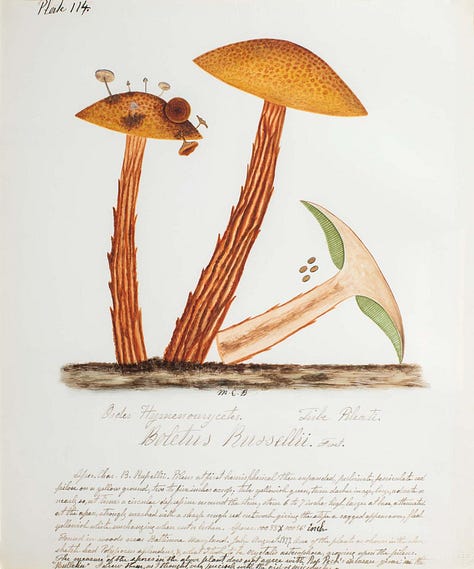Okay, something lovely happened this weekend, and so many new people have joined our party here. Thank you for coming, and welcome.
My brain has been tooling around with chains and connections; the synergies, serendipities, and synchronicities that jump in our path. If we pay attention to them, they can lead us into wonderlands.
A bunch of people read the Saturday New York Times email newsletter. During the week, this daily missive is a toe-curling horror of current events. The editors go easy on us during the weekend, serving up something light, yet introspective. On Saturday, Melissa Kirsch discussed ice breakers, even though we kind of hate them they can serve an important function: “ a way to get closer, to remind ourselves that we [a]re interesting, dynamic human beings even in the matrix of the workplace.”
But these questions don’t have to be insipid. She pointed to Rob Walker’s Art of Noticing newsletter, in which —among offering unique ways to cultivate an awareness to our world—he serves up a weekly icebreaker and has a big fat juicy google doc full of them. So many of you clicked on the link to The Art of Noticing, then followed another link that brought you here.
Thank you so much for coming to my party. What a treat to have woken up to an inbox full of new friends!
I’d written a whole intro for today’s piece about one semester in college when all of my classes from different departments rubbed up against each other in the very best way possible. I pointed out that back in the 1900’s (1991-93 to be exact) registering for courses was a Hunger Games style melee where you hoped for the best, but got what you got. That roster of classes hadn’t been 100% planned, but it was pure synergy, serendipity, and synchronicity.
But then this very serendipitous burst of fresh readers popped in. People who are curious and follow the little paths that open up before them. And so, I want to tell you about more synergistic serendipitous1 synchronicities2 that burst into my world this week. Or is it a synchronistic, serendipitous synergies3? Or how about: SYNCHRENDIPERGY:
Part 1
I’m listening to the audio version of Book of Eve, about a religious woman in a fictional renaissance-era country who is delivered unto a magical volume of drawings and curious script. Hijinks ensue.
Midway through, I discovered the mysterious volume in the story is perhaps a riff on the even more mysterious Voynich Manuscript.
How have I inhabited the world for this long without knowledge of the Voynich Manuscript?



Radio-carbon dated back to 1404-1438, it’s a handmade codex or book, hand bound in goatskin with multiple signatures of calfskin vellum. Named “Voynich” for the Polish antiquarian book dealer who acquired the manuscript in 1912, the book’s lush illustrations and elaborate script is an indecipherable mystery.
Yale University’s Beinecke Rare Book and Manuscript Library owns it. They’ve published a digital version you can peruse for free on their website. (Yes, you can download the whole 200+ pages for free!)
The puzzle: the book’s beautiful script is not written in any language known to man. The hand drawn botanical illustrations represent no plants ever cataloged, before or since.
The world's finest codebreakers and linguists cannot puzzle out the text. They’ve all tried. Numerous scholars have staked their professional careers on what they’re sure is the real story. Nah, brah. Try again.
Alchemy? Fiction? Hoax? Sampler?
This new knowledge rubbed up against this news story.
Part 2



This week in Albany, New York, the state’s museum will exhibit the work of Mary Elizabeth Banning. A self-educated mycologist, she spent her life in the mid-1800's studying fungi in rural Maryland—when she wasn’t working at her teaching job or caring for her ailing mother and sister.
Banning, on account of her being a woman, was automatically determined to be inferior, along with her Lady Art™ and Lady Research™. Scientists were men. They published Big, Important Tomes™ about real disciplines like botany. Women were relegated to amusing themselves with lesser growing things like fungi, lichens, algae, and mosses.
Banning’s life’s work was an exquisitely illustrated manuscript of 175 different mushrooms, including 23 species unknown to science at the time. She entrusted this manuscript to her mentor and pen pal, Charles H Peck, the founder of the fungal collection at the New York State Museum. Banning died impoverished in a boarding house in Maryland. Almost 100 years later, curator of mycology, John Haines, uncovered the manuscript in a drawer behind a cabinet of taxidermied chickens.
Now, for the first time ever, the entirety of Banning’s collection will be displayed together.
The manuscript has still not been published as a book.
It doesn’t take a whole heckuvalotta googling around to see that the pages from the codex look identical to your OG botanical illustration journals, kind of like Banning’s. It’s easy to forget that before we had image search and plant ID on our phones, these illustrations were how we forwarded our growing knowledge of the natural world.
Part 3
Okay, so thennnnnn, I’m taking my daily stroll through my Substack feed to see what lovely wonders await me (as an antidote to the horrors of the news) and I stumble upon this gem from Allie Sullberg of The Museum of Small and Important Things.
Sullberg walks us through the exercise of mapping out our conversations. Wait-what?!?!?! Chat cartography?!?!
She’s talking about the juicy conversations, the ones you chew on for days afterwards, and then most likely forget, but wish you could remember the high points.
But here’s the thing: she makes these maps in floral shapes, so they look almost exactly like the botanical illustration drawings.
All of this Sychrendipergy is most likely frequency illusion at work, but it’s all about old manuscripts and botanical drawings and journals for me right now. Unbidden, versions of each keep revealing themselves to me, in real life, (it’s azalea season where I live), but also drawings and quirky images as well as interesting tales.
I’m so in love with the collision of these worlds, how little wonders keep falling in my way for me to collect like rocks on a walk through the woods. I pick each one up to examine it thoroughly, then contemplate it and rub it between my fingers as I walk along. Then I’ll find another little specimen, so tuck that rock into my pocket to hang out with a few that are already there— for me to draw and ponder at later date, then maybe collect into a book that may or may not be published…
I’ll see you in a few days with so many links of so much cool stuff I found on my synchrendipergy adventures.
I’m always open to ideas, suggestions, shenanigans, tomfoolery, collaborations, cheese, snacks, and field trips.
You can find my art here and here. I offer custom workshops and design. I am the proud guardian/custodian of a 16 year old cheeseburger named Patty.
If you are a free subscriber, please consider supporting my efforts to make the world a less shitty place.
All photographs and art are by me, Rubi McGrory, unless otherwise noted. I occassionally use affiliate links. Support the arts however you can.
words and images © Rubi McGrory 2021-2025
Serendipity: finding interesting or valuable things by chance
Synchronicity: meaningful coincidence with no apparent discernible causal connection
Synergy: when two or more things combined are greater than the sum of their parts.











Three of my favourite values all rolled into one!
I am now completely fascinated by the Voynich Manuscript!
I am a needle artist and the elements of the designs are totally intriguing!